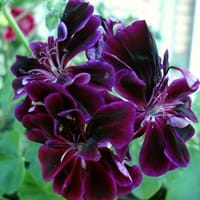Life Span
Perennial
Annual
Type
Flowering Plants
Tender Perennial
Origin
Mediterranean, North Africa, Northern America
Hybrid origin
Types
Anthony Peak Lupine, Silver Bush, Garden Lupine, Spider Lupine, Adonis Lupine
Not Available
Habitat
Pine barrens, Sandy areas
All sorts of environments
USDA Hardiness Zone
3-7
10-15
AHS Heat Zone
8-1
Not Available
Sunset Zone
1a, 1b, 2a, 2b, 3a, 3b, 4, 5, 6, 7, 14, 15, 16, 17
8, 9, 12, 13, 14, 15, 16, 17, 18, 19, 20, 21, 22, 23, 24
Habit
Upright/Erect
Clump-Forming
Flower Color
Blue, Pink, White
Hot Pink, Coral
Flower Color Modifier
Not Available
Bicolor
Fruit Color
Not Available
Not Available
Leaf Color in Spring
Light Green
Green
Leaf Color in Summer
Green
Green
Leaf Color in Fall
Green
Green
Leaf Color in Winter
Not Available
Light Green
Leaf Shape
Oblovate
Acicular
Plant Season
Summer
Spring, Summer, Fall, Winter
Sunlight
Full Sun, Part sun
Full Sun, Partial Sun
Type of Soil
Loose, Moist
Loam, Sand
The pH of Soil
Slightly Acidic
Neutral
Soil Drainage
Well drained
Well drained
Bloom Time
Late Spring, Summer
Indeterminate
Tolerances
Not Available
Drought
Where to Plant?
Ground
Ground, Pot
How to Plant?
Seedlings
Leaf Cutting, Root Division, Seedlings, Stem Cutting
Plant Maintenance
Medium
Medium
Watering Requirements
Form a Soil ring to water efficiently, Keep the ground moist but not water-logged, Requires a lot of watering, Water in morning to avoid prompting diseases
Do not water excessively
In Summer
Lots of watering
Moderate
In Spring
Moderate
Moderate
In Winter
Average Water
Average Water
Soil pH
Slightly Acidic
Neutral
Soil Type
Loose, Moist
Loam, Sand
Soil Drainage Capacity
Well drained
Well drained
Sun Exposure
Full Sun, Part sun
Full Sun, Partial Sun
Pruning
Prune ocassionally
Prune regularly, Remove damaged leaves, Remove dead branches, Remove dead leaves
Fertilizers
All-Purpose Liquid Fertilizer
All-Purpose Liquid Fertilizer, fertilize every 2-3 weeks while growing
Pests and Diseases
Aphids, Fusarium wilt, Root rot, Thripes
Red blotch, Whiteflies
Plant Tolerance
Drought
Heat And Humidity
Flower Petal Number
Single
Semi-Double
Fragrant Bark/Stem
No
Yes
Foliage Texture
Medium
Medium
Foliage Sheen
Matte
Matte
Attracts
Bees
Not Available
Allergy
Abdominal pain, Asthma, Nausea, Swelling in the face, Vomiting
Not Available
Aesthetic Uses
Showy Purposes
Showy Purposes
Beauty Benefits
Not Available
Moisturizing, Skin cleanser
Environmental Uses
Air purification
Air purification, Insect Repellent
Medicinal Uses
Anthelmintic, Diuretic, Treatment of ulcers
Fever, Intestinal irritations, Kidney problems, Respiratory Disorders, Wounds
Part of Plant Used
Flowers, Seeds
Flowers
Other Uses
Showy Purposes, Used as Ornamental plant, Used for fragrance
Cosmetics, Culinary use, Making Perfumes, Oil is used for aromatherapy, Showy Purposes, Used as a nutritious food item
Used As Indoor Plant
No
Yes
Used As Outdoor Plant
Yes
Yes
Garden Design
Bedding Plant, Container, Feature Plant, Foundation, Rock Garden
Bedding Plant, Container, Edging, Hanging Basket, Houseplant, Mixed Border
Botanical Name
Lupinus
PELARGONIUM 'Balgalpipn'
Common Name
Hybrid Lupine
Hybrid Ivy-leaved Geranium, Zonal Geranium
In Hindi
वृक संयंत्र
Pelargonium
In German
lupine
Pelargonium
In French
usine de lupin
Pelargonium
In Spanish
planta de lupino
Pelargonium
In Greek
φυτό λούπινο
Pelargonium
In Portuguese
tremoço planta
pelargônio
In Polish
łubin roślin
Pelargonium
In Latin
Plinio herba
Pelargonium
Phylum
Magnoliophyta
Magnoliophyta
Class
Magnoliopsida
Magnoliopsida
Family
Fabaceae
Geraniaceae
Genus
Lupinus
Pelargonium
Clade
Not Available
Angiosperms, Eudicots, Rosids
Tribe
Not Available
Not Available
Subfamily
Faboideae
Not Available
Importance of Lupine and Pelargonium
Want to have the most appropriate plant for your garden? You might want to know the importance of Lupine and Pelargonium. Basically, these two plants vary in many aspects. Compare Lupine and Pelargonium as they differ in many characteristics such as their life, care, benefits, facts, etc. Every gardener must at least have the slightest clue about the plants he wants to plant in his garden. Compare their benefits, which differ in many ways like facts and uses. The medicinal use of Lupine is Anthelmintic, Diuretic and Treatment of ulcers whereas of Pelargonium is Fever, Intestinal irritations, Kidney problems, Respiratory Disorders and Wounds. Lupine has beauty benefits as follows: Not Available while Pelargonium has beauty benefits as follows: Not Available.
Compare Facts of Lupine vs Pelargonium
How to choose the best garden plant for your garden depending upon its facts? Here garden plant comparison will help you to solve this query. Compare the facts of Lupine vs Pelargonium and know which one to choose. As garden plants have benefits and other uses, allergy is also a major drawback of plants for some people. Allergic reactions of Lupine are Abdominal pain, Asthma, Nausea, Swelling in the face and Vomiting whereas of Pelargonium have Not Available respectively. Having a fruit bearing plant in your garden can be a plus point of your garden. Lupine has no showy fruits and Pelargonium has no showy fruits. Also Lupine is flowering and Pelargonium is not flowering . You can compare Lupine and Pelargonium facts and facts of other plants too.





